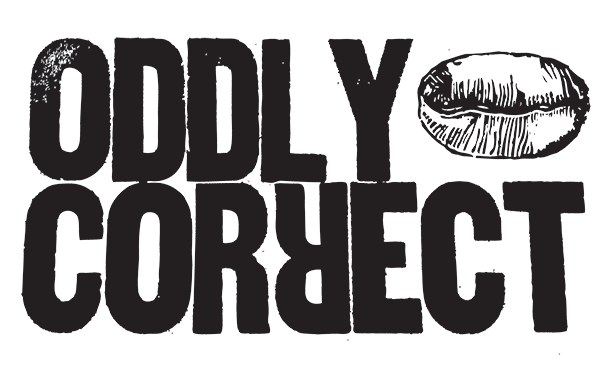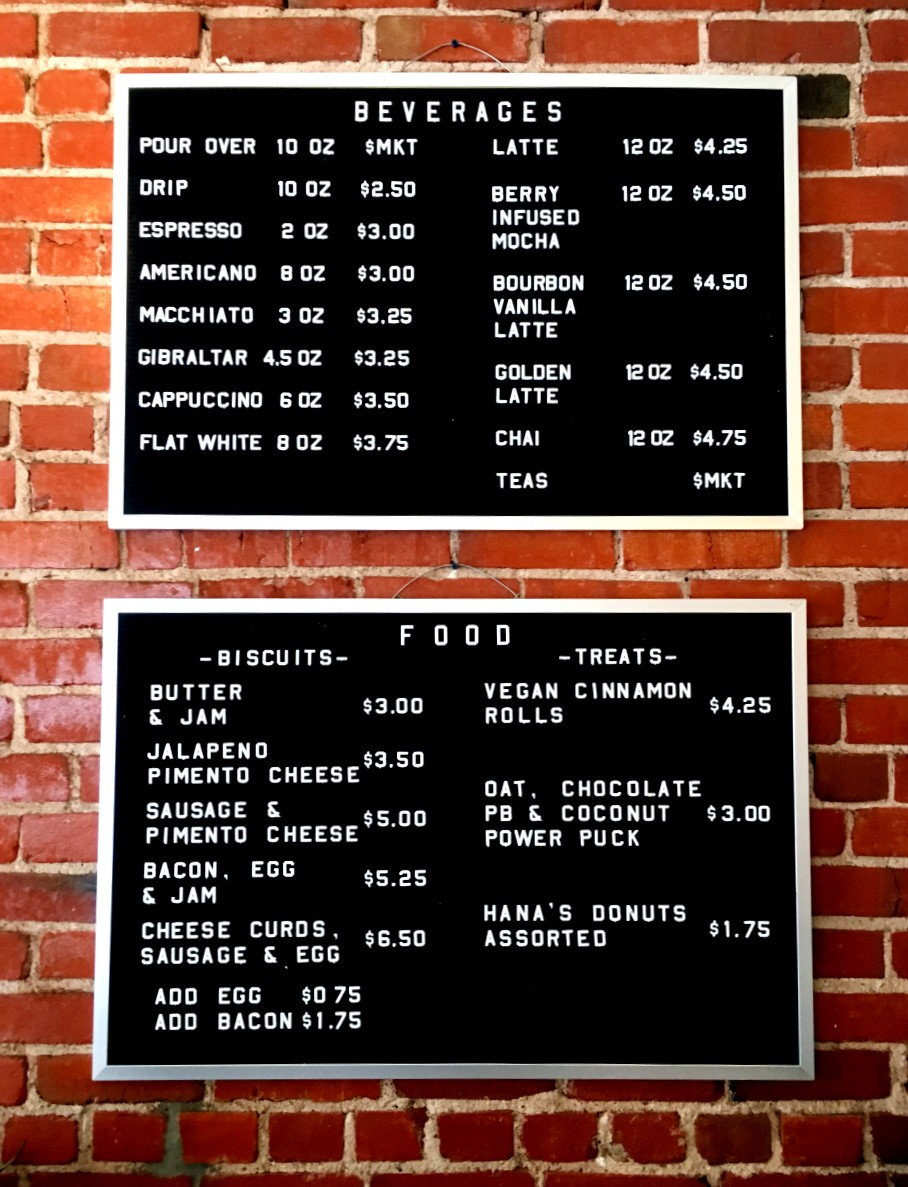As a company, we strive to be a reliable source for mind-opening coffee that anyone can enjoy. A lot of what we focus on has a particular person in mind: people looking to brew great coffee at home. So, we thought we’d leave a couple pointers here that will help improve the quality of anyone’s morning cup. Any one of these steps alone will make your coffee taste better than it does now. Put all of them together, and you’re on your way to freaking out your morning cup, every time.
Use Fresh Coffee
There are two ingredients in a great cup of black coffee. Coffee, and water. Let’s start with the coffee. Coffee is the roasted seed of a cherry-like fruit that’s been cleaned and dried. It is a consumable product. After coffee is roasted, the freshness and flavor will immediately be assaulted by its natural enemies: light, heat, moisture and air. While coffee does need some time after roasting to rest (flavor and body are still developing over the next 12-24 hours), fresher is almost always better for drip coffee.
Look on the grocery store shelves, and many coffees will have a “best before” date on the bag. Examine carefully, and you might find that date to be months, maybe even years in the future. The coffee is of course safe to drink up to that date. But like we said before, its enemies have long been at work degrading the flavor and aroma compounds in the coffee. Oxidation is one of the biggest factors. As oxygen in the air contacts the roasted coffee, it donates electrons to compounds, altering them and changing the perception of flavors and aromas in the coffee. Think about half an avocado in your fridge. After a couple days, that sucker looks brown and is gonna taste funky. Sure there’s no mold or harmful organisms propagating on your avocado, but you know that thing is not gonna make good guac. Well the same thing is happening to your coffee. It may take a little longer, and you might not be able to see it clearly, but your coffee is degrading from the moment it leaves the roasting chamber.
Our general rule of thumb is consuming coffee within one week after roasting gives the best flavor, and after two weeks the flavor really starts to decline. Here’s where you have to choose your coffee carefully. That “best-by” date doesn’t tell you WHEN your coffee was roasted. We recommend always buying coffee that has a “roasted on” date. This lets you know exactly how old that coffee is
You’ll also benefit from purchasing directly from a coffee roaster you trust. At Oddly Correct, every bag we ship to customers is no more than a day out of the roaster. Coffees on our retail shelves in Kansas City are never more that 7 days old. We want you to have the best experience possible with our coffee, and that means not letting stale and oxidized Oddly Correct reach your cup. A byproduct of buying directly from coffee roasters you know and trust is having a reliable source for high-quality coffee. When you get familiar and comfortable with a roaster’s buying practices, roasting style and general quality level, you can know that you’re going to get a bag that fits your preferences and gives you a better coffee experience every morning.
Use Good Water
Coffee that has been brewed to a good strength is roughly 98.5% water. This means that if your water has off flavors or smells (chlorine, lead, etc) that is definitely going to show up in your cup of coffee. Your morning cup of coffee will greatly benefit from some sort of filtration. I recommend either adding an in-line filter to your kitchen faucet, or for a more plug-and-play option get a faucet-attaching or pitcher filter to supply your coffee and drinking water (it’s gonna taste better!)
Also, the chemistry of water affects the way flavor and aroma compounds in ground coffee are extracted into the water. In general, the overall mineral content (often listed as “total hardness” in parts per million ppm) and the alkalinity (a measure of the waters ability to neutralize acids, often listed as “carbonate hardness” in ppm or “degrees alkalinity”) are the important factors. Usually, you can find this info from your municipal water source in a yearly water quality report. In general, look for total hardness between 100 – 200 ppm, and alkalinity between 15 – 40 ppm (or 1 – 2.5 degrees). I could go into great detail as to how these factors actually change your brewed coffee, but that would be an essay on its own… If your local water source falls above these ranges, you can mix in distilled water to lower the alkalinity and hardness of your water to acceptable levels (distilled water has zero hardness and zero alkalinity, so you can reduce both values by a % by adding that % of distilled water to your own water). But this is getting complicated… In general, filtering your water will be enough to notice a significant improvement in the quality of your morning cup!
Measure
Using the right amount of coffee and water is essential to brewing a good cup. If you’re getting inconsistent cups of coffee at home, my guess is that you’ve been “eyeballing” your grounds or water to brew your coffee. Without measuring these quantities, you will be constantly shooting in the dark for a well-brewed cup of coffee that is a strength you enjoy. While any method of measurement will help you to figure out how to dial in your brew, I highly recommend getting a gram scale to measure both your coffee and your water. There are is inexpensive and accurate (I’ve had mine at home for several years) or you can find many others that are more aesthetically pleasing. Once you can measure your coffee and water, here’s a good starting point: one gram of coffee for every 15 grams of water. From there you can change that ratio to fit your preference.
Get A Good Grinder
Once you’ve got your hands on some fresh, kick-ass coffee, you need to grind it before you can get all that into your morning cup. If you’ve been grinding your coffee where you purchase it, stop! Grinding coffee exponentially increases the surface area in contact with all the elements that stale and oxidize coffee, thus exponentially increasing the speed with which that process happens. So, get a grinder you can use at home!
Here’s where the qualifier “good” comes into play. All coffee grinders are not created equal. There are two basic types: blade grinders, and burr grinders. You’re probably familiar with blade grinders. Two whirling metal blades that spin at high rpms to break up your coffee. While cheap and simple to operate, blade grinders have a major flaw. Unless you’re planning on completely pulverizing your coffee into a powdery substance, you have no real control over how coarse/fine the coffee is ground and the blades chop the coffee into many different size particles. Not only does this make it hard for you to replicate a particular grinding situation, but it leads to uneven brewing from all the varying particle sizes. Without getting into too much scientific lingo, inconsistent particle size means inconsistent surface area in contact with your hot water, which leads to over-extracted AND under-extracted flavors in your cup.
In contrast, burr grinders use either sharp flat disc or conical “burrs” to cut and mash the coffee to a specific size determined by the distance between the burrs. So, you have control over the fine-ness of the grind, and greater consistency. This makes for better tasting cups and a more repeatable process. You will pay more for a good burr grinder (any costing less than $65 or so may not be actual sharpened burrs) but there are many options available. I recommend the Baratza Encore, or Bodum Bistro as great everyday workhorses. You can also get hand-crank burr grinders for not much money at all (you just have to be willing to invest your time and energy…grinding even 25 grams of coffee takes a couple minutes and quite a few turns on the crank). If you really want to step it up, there are even models that weigh your coffee for you…
Enjoy Your Coffee
This one is a bit of mind-over-matter, but effective nonetheless!
You can be following all the above advice, but if you’re blasting through your morning cup to get the caffeine fix, chances are you are not really going to enjoy your coffee (or attached morning ritual) all that much. We recommend slowing down and brewing your coffee yourself. Any pour over method of brewing is great at forcing you to take a few minutes and enjoy your process, and most are available at a minimal cost. My favorite is the stainless steel Kalita Wave dripper. Durable, versatile and forgiving.
Do you have a favorite mug? If not, find one. And
make sure it isn’t a travel mug. Nothing sucks the enjoyment out of a great cup of coffee like drinking it in traffic. Get your hands on a nice, heavy ceramic mug or enamel cup and sit with your brew. Drink till it is gone. Then get to work. Everything in life is better when you aren’t just trying to move on to the next thing. Coffee is no exception. That’s also why we have art on our coffee bags. It’s another way to engage you in the morning, and hopefully help you take pause and spend time with the coffee. Think of it like the back of the breakfast cereal box, but for grown-ups…
Ask Questions
There’s a lot of information here, and I’m just scratching the surface. So as you’re pursuing better coffee at home, don’t be afraid to ask questions. Contact us with any questions or problems you run into, ask a barista at your local shop, or do some searching online. There’s lots of knowledge out there, but following any of these 6 pieces of advice will positively affect your morning brews.

